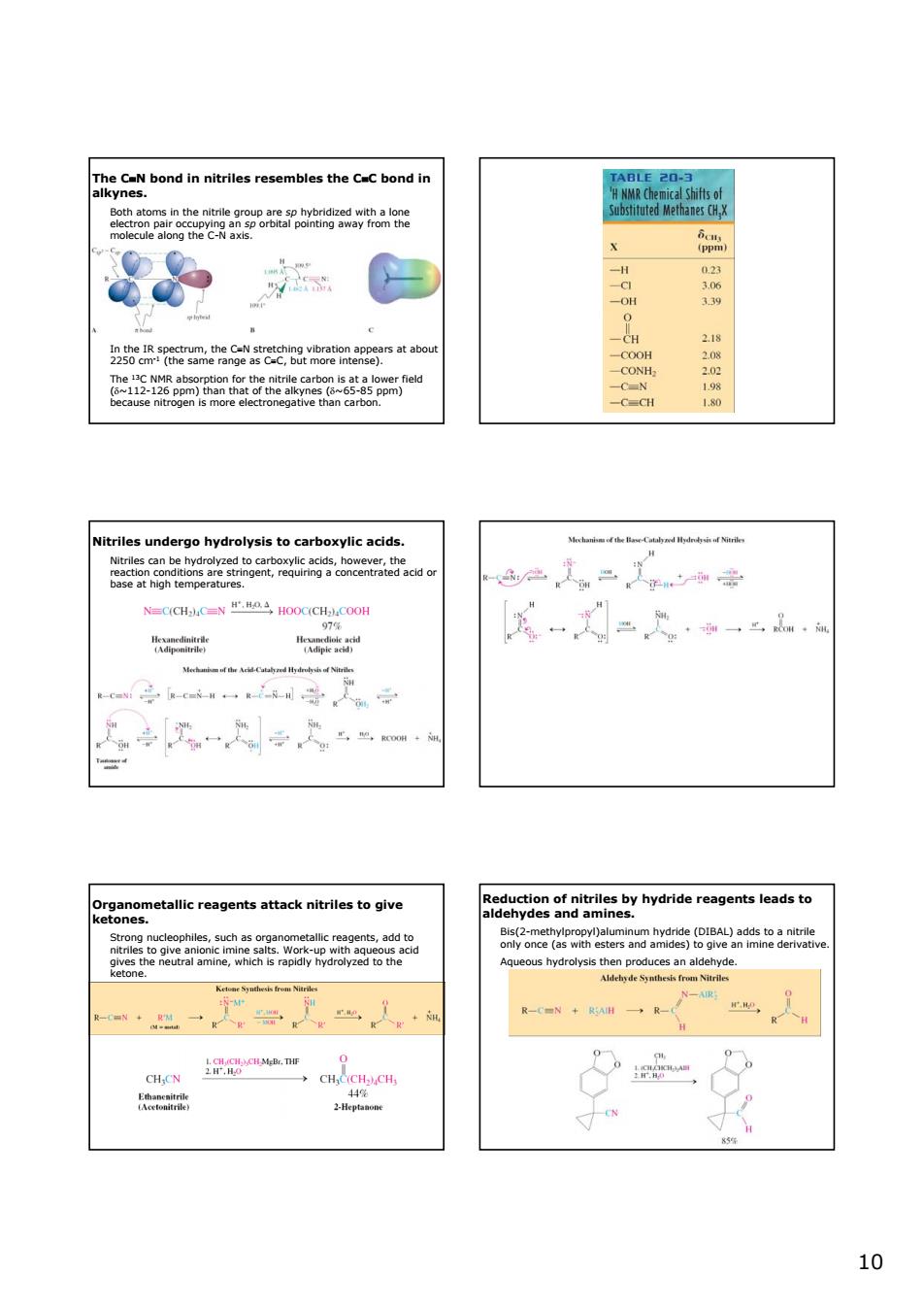正在加载图片...

bond in nitriles resembles the CC bond in htuiedhaigCX 8& 2bR8rmehgngeeeBeatncesastabo triles undergo hydrolysis to carboxylic acids NGCHCNXG00 nts attack nitriles to give hydriderdsto R-=N5H一R- 9 1010 The C≡N bond in nitriles resembles the C≡C bond in alkynes. Both atoms in the nitrile group are sp hybridized with a lone electron pair occupying an sp orbital pointing away from the molecule along the C-N axis. In the IR spectrum, the C≡N stretching vibration appears at about 2250 cm-1 (the same range as C≡C, but more intense). The 13C NMR absorption for the nitrile carbon is at a lower field (δ~112-126 ppm) than that of the alkynes (δ~65-85 ppm) because nitrogen is more electronegative than carbon. Nitriles undergo hydrolysis to carboxylic acids. Nitriles can be hydrolyzed to carboxylic acids, however, the reaction conditions are stringent, requiring a concentrated acid or base at high temperatures. Organometallic reagents attack nitriles to give ketones. Strong nucleophiles, such as organometallic reagents, add to nitriles to give anionic imine salts. Work-up with aqueous acid gives the neutral amine, which is rapidly hydrolyzed to the ketone. Reduction of nitriles by hydride reagents leads to aldehydes and amines. Bis(2-methylpropyl)aluminum hydride (DIBAL) adds to a nitrile only once (as with esters and amides) to give an imine derivative. Aqueous hydrolysis then produces an aldehyde